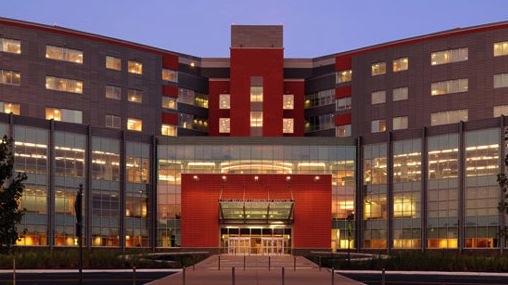The Department of Defense has released the findings of an independent report on energy efficiency and sustainability standards used by the Pentagon for military construction. The report strongly affirmed the value of LEED-certified high performing buildings to America’s military and U.S. taxpayers.
The study, conducted by the National Research Council, considered only energy efficiency. It recommended that the DoD continue to require new buildings or major renovations to be designed to achieve at least LEED Silver or the equivalent.
Roger Platt, Senior Vice President of Global Policy and Law at the U.S. Green Building Council, says, “LEED has played a significant role in reducing energy and water bills in public sector buildings across the country, saving taxpayers money and contributing to the nation’s security. This important new independent study from the National Research Council concludes that the LEED green building certification program should continue to be used in Defense Department buildings to advance energy efficiency in construction and reduce operational costs. Using LEED at Pentagon installations is a win-win proposition for the country and for the military personnel these buildings serve."
(http://www8.nationalacademies.org/onpinews/newsitem.aspx?RecordID=18282&utm_source=Press+Releases&utm_campaign=5fd1d3641e-Direct_PR_Military_Facilities2_15_2013&utm_medium=email)
Related Stories
Transit Facilities | Feb 4, 2015
London mayor approves plan for a bicycle highway
The plan will guarantee bike riders a designated stretch of street to ride from east to west through the city.
Sports and Recreational Facilities | Feb 4, 2015
Arup unveils plans for the new A.C. Milan stadium
The venue will include a modern stage for the home matches together with a hotel, sports college, restaurants, children’s playground, green areas, and spaces open to the city and dedicated to public use.
Higher Education | Feb 3, 2015
Integrated Learning Neighborhoods: A solution for linking student housing with the typical student experience
Just as urban housing fits into the city as a whole, student housing can be integrated into the campus network as a series of living/learning neighborhoods, write Gensler's Brian Watson and Mark McMinn.
Office Buildings | Feb 3, 2015
5 trends transforming workplace design
RTKL's workplace design expert Jodi Williams foresees healthier and more technologically enabled offices that allow productive worker interaction, wherever they happen to be.
Architects | Feb 3, 2015
Frank Lloyd Wright’s work nominated for UNESCO World Heritage Status
If selected, Wright’s work will be the first examples of U.S. modern architecture on the list.
Contractors | Feb 3, 2015
Nonresidential construction spending expands in December 2014
Seven of 16 nonresidential construction subsectors posted increases in spending in December on a monthly basis.
Office Buildings | Feb 3, 2015
Bjarke Ingels' BIG proposes canopied, vertical village for Middle East media company
The tensile canopy shades a relaxation plaza from the desert sun.
Fire-Rated Products | Feb 3, 2015
AIA course: Fire and life safety in large buildings
Earn 1.0 AIA/CES learning units by studying this article and successfully completing the online exam.
Multifamily Housing | Feb 2, 2015
D.C. developer sees apartment project as catalyst for modeling neighborhood after N.Y.'s popular High Line district
It’s no accident that the word “Highline” is in this project’s name. The goal is for the building to be a kind of gateway into the larger redevelopment of the surrounding neighborhood to resemble New York’s City’s trendy downtown Meatpacking District, through which runs a portion the High Line elevated park.
Healthcare Facilities | Feb 1, 2015
7 new factors shaping hospital emergency departments
A new generation of highly efficient emergency care facilities is upping the ante on patient care and convenience while helping to reposition hospital systems within their local markets.

















